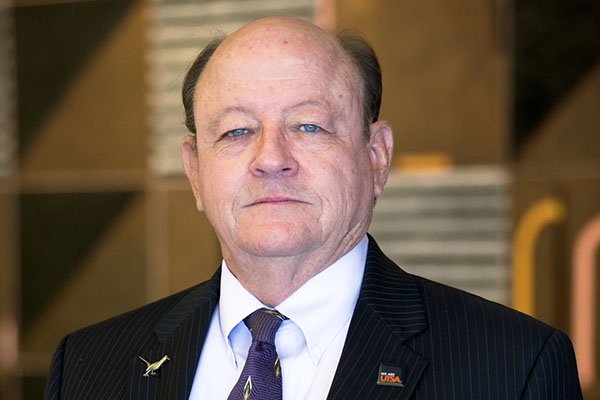Posted on August 20, 2025 by Wendy Frost

Jerry Keating
His track record for solving problems began at an early age. As a high school student he earned a perfect math score on his SATs. Later in graduate school he solved an unsolvable problem presented to him by his advisor.
“Throughout my career, I’ve had a bunch of great teachers as well as mentors who motivated me and helped me succeed,” said Keating, who is a Distinguished Teaching Professor at UTSA.
His career has also included stints as a high school teacher, a research fellow at Los Alamos National Laboratory and a reliability engineer at Bell Helicopters.
During this time Keating has watched technology revolutionize the field of statistics. When he started slide rules were all the rage. He remembers the first handheld scientific calculators as well as needing 1,700 punch cards to run a computer program that would take all night.
“The computers for the Manhattan Project at Los Alamos would have filled UTSA’s RACE facility,” said Keating, who still considers Fortran the most powerful computational language.
Utilizing his talent for problem solving, Keating was sought out as an industry consultant for major companies like NASA, Southwest Research Institute, Mobil and the Air Force.
“When you are in industry you get pulled into cases where they need statistics to support their case,” he said. “I got involved with problems that were sent my way.”
Before data analytics was a buzzword, he worked with the Air Force on a project to automate the diagnosis process to read electrocardiograms of pilots. With 40,000 aviators receiving two exams a year, they didn’t have enough doctors to review all of the data. Keating developed a co-variance matrix to look for abnormalities in the readings.
“That was a very rewarding exercise, and it was a lot of fun,” he said.
He also developed a patent to detect leaks in underground gas storage tanks that is now owned by Valero; assessed battery failure for a NASA lunar mission; and developed a process to determine the reliability of subsea fiber optic cables for oil pumping stations in the Gulf of Mexico.
When Keating joined UTSA’s math department in 1981, the campus was a much different place. Construction was finishing on the Arts Building, the basketball team was just established, and it was predominantly a commuter campus.
“The majority of our students were at the master’s level, and we had a lot of really smart students who were professionals stationed at the local Air Force bases,” said Keating.
Throughout the years he has been instrumental in building the college’s statistics and actuarial science programs and has been recognized at the highest levels for his teaching excellence winning both the President’s Distinguished Achievement Award for Teaching Excellence at UTSA as well as the Chancellor’s Council Teaching Award from UT System twice each. He was elected to the honorific rank of fellow of the American Statistical Association in 1997.
Keating relishes the role of being there when the light bulb comes on for students when they make a new discovery. “I love the students at UTSA. Great students invigorate you as a professor. “I feel that the purpose of education is to produce new generations that are better than the generations that proceeded them,” said Keating. “And, I’ve been blessed to witness that both personally and professional throughout my career.”

